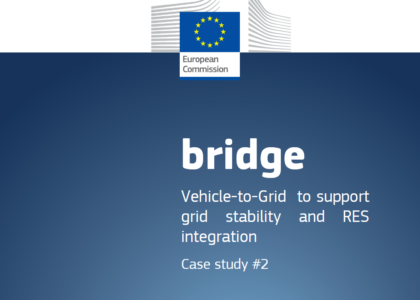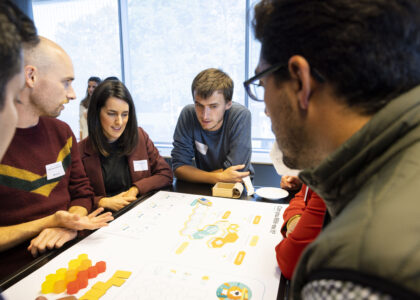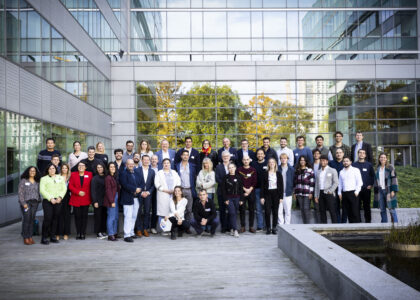by Rebecca Hueting, RENAISSANCE dissemination team, Deep Blue Italy
RENAISSANCE’s first public meeting with the External Stakeholders Group took place on 10th December 2020 from 10:00 am CEST to 13:30. The event was public and about 18 external participants joined the event, of which nine were members of the project ESG and nine registered themselves using the invitation link shared on our social media.
Opening session
From our Consortium the project Coordinator prof. Thierry Coosemans presented the project and the project manager Stella Arapoglou moderated the opening session. Since ESG members and all registered participants had received in advance the link to the interactive presentation, they were all quite aware about the project objectives and status of the four European pilots. Therefore we decided to avoid long slides presentation, in favour of a more informal meeting.
A short tour the table was organised by the dissemination leaders, Rebecca Hueting and Alessandra Tedeschi (Deep Blue): thanks to a shared whiteboard exercise called “Stinky Fish” all participants could creatively introduce themselves. After the tour the table participants were invited to keep their cameras on, if they wished, and follow the meeting in the most comfortable condition. Since very few slides were presented, simply listening to the meeting as a podcast was suggested and questions could be left anytime in the chatbox and addressed at the end of each session.
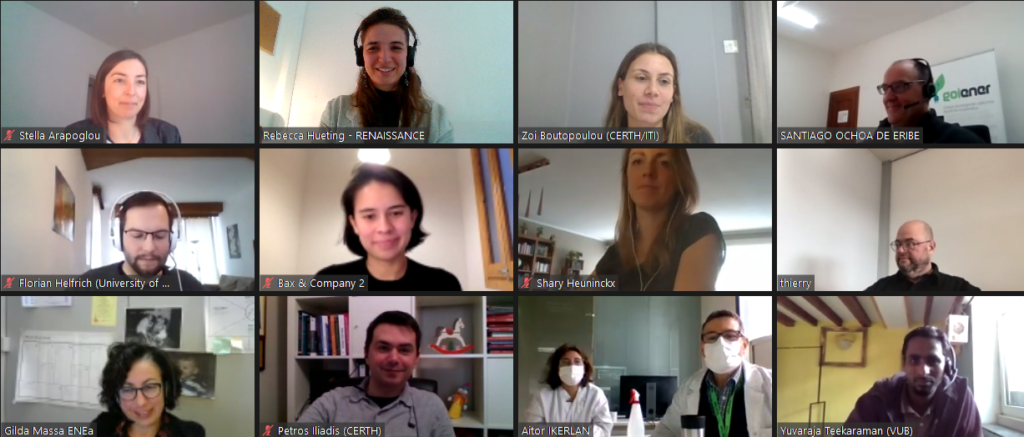
Updates from pilots
The pilot site leaders shared latest achievements and implementation:
- Miguel Fontela Martinez (EVERIS) presenting Manzaneda (Spain) and how to overcome Covid-19 issues in data collection;
- Maarja Meitern (Bax&Company) presented Eemnes (the Netherlands) and the peer-to-peer trading issues and lessons learnt;
- Shary Heunynckx (VUB) presented Jette (Belgium), the smart-metering and the Enerjettic online challenges with campus’ students;
- Pantelis Botsaris (DUTH) presented Kimmeria (Greece) and the goodwill of local students and University personnel to keep-up with implementation processes despite the delays.
At the end of each intervention some time to address questions was given. Clarifications concerned: the actual configuration of the grid in Manzaneda, after project’s implementations; the number of citizens who decided to join the energy community and the regulatory issues; the latest implementations in Jette’s Health Campus; how does data collection happen while Duth’s University Campus is closed.
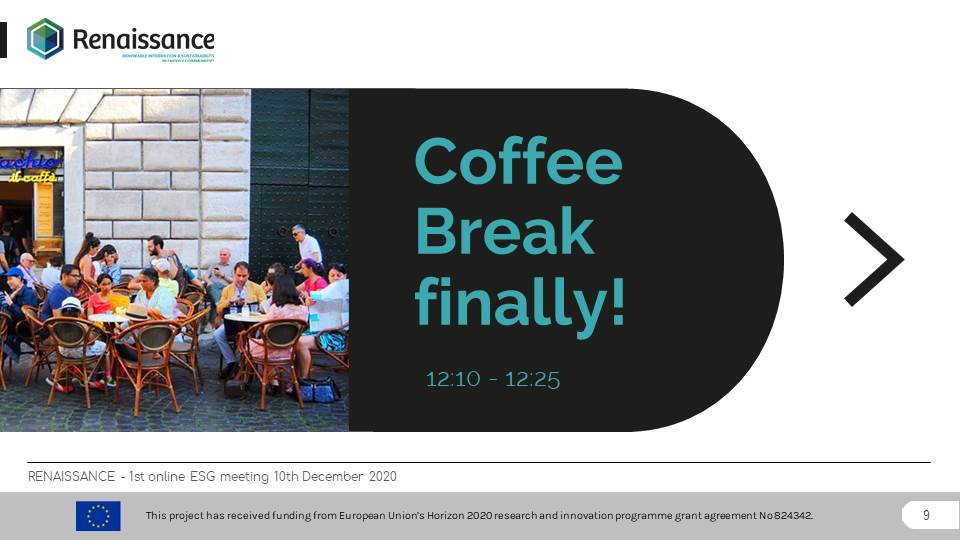
Survey Report preview
After the virtual coffee break Rebecca Hueting (Deep Blue) shortly introduced the results of the “Survey on social acceptance of RENAISSANCE solutions” to the audience, as part of the citizen engagement strategy of the project. The glossy report is the result of an analytical process that took several months, since more than 150 questionnaires were compiled and they included more than 40 question items. The main results of the survey are related to the level of acceptance of renewables and the general agreement about the importance of the energy directives such as the “Clean energy for all” package provisions.
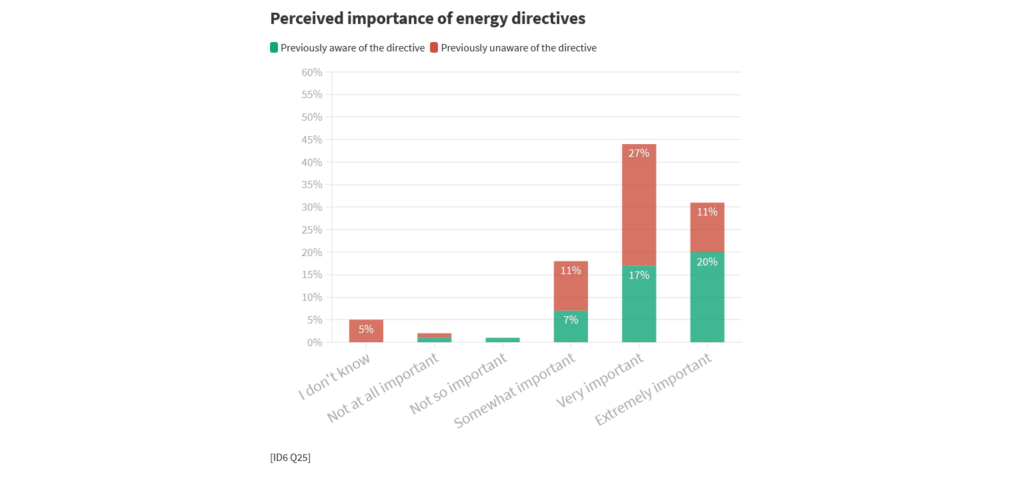
The knowledge about Local energy communities and the related business models is still quite low, yet respondents on average are more keen to test new energy supply systems if it does not imply too much hassle to switch. The mayor risks perceived in that sense are the low maturity of service and the hidden or unknown costs, while among the benefits environmental and economic are evenly ranked. The full glossy report will be published shortly on this website’s resources section. Meanwhile the Survey Report preview presentation is available by clicking on the button provided below.
Interactive force field analysis
As final session of the First public meeting, External Stakeholders Group members and all participants including Consortium members were invited to leave their input on sticky notes via an interactive board. Thanks to the initial ice-breaker all participants were already at ease with the tool.
The force field analysis assesses drivers and barriers to innovative ideas or technologies (also known as PEST: political, economical, social, technological drivers and barriers). Each sticky note had a specific code allowing the correct ranking of their impact: yellow* for the less relevant, green** for the mid ones and red*** for the most impactful.
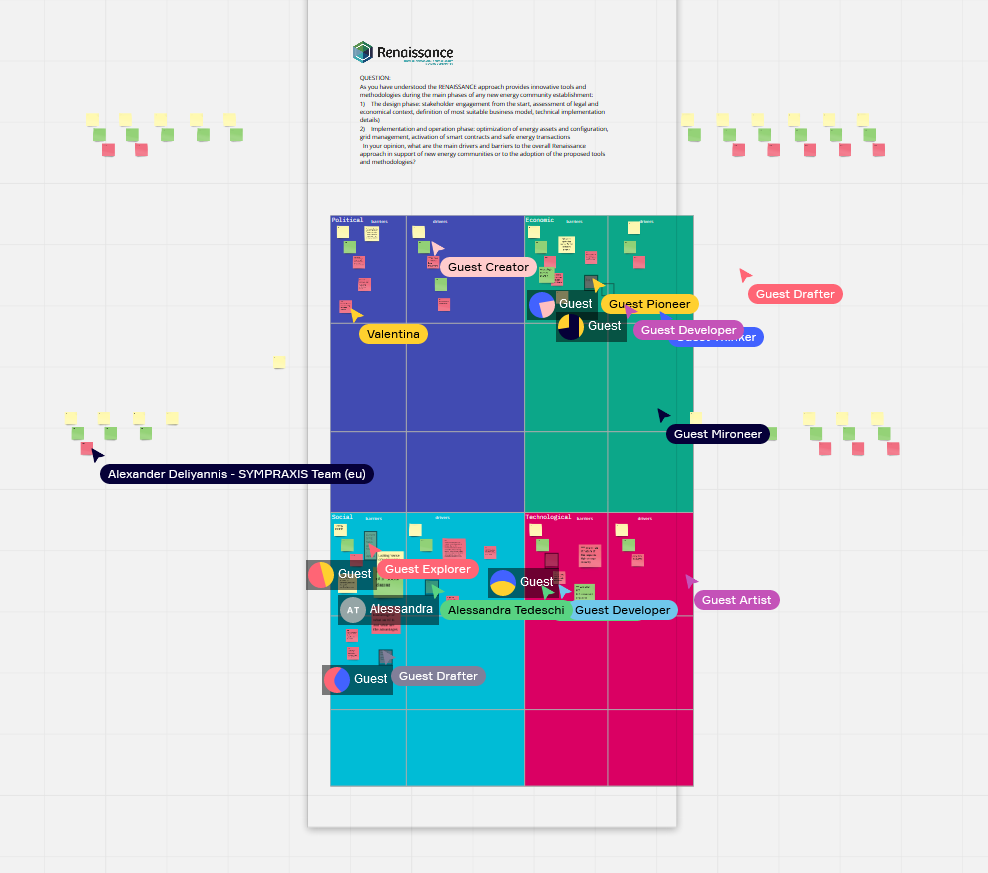
POLITICAL
| BARRIERS | DRIVERS |
| Huge energy regulation changes to swift the focus from centralised to decentralised system is needed | Have a national framework |
| Unsuitable regulatory framework for energy communities and virtual energy metering | EU decarbonisation committments |
| Regulatory framework should transform in order to aid a more decentralised production of energy policies are needed to motivate the transition | Eu climate ambitions |
| Decentralised vs traditionally centralised systems | National mediatic communication |
| Local authorities prefer to develop public companies rather than be “one more” among an energy community | Local authorities are very concerned about local development fostering economic inclusiveness. They are thinking about solutions to be deployed locally |
ECONOMIC
| BARRIERS | DRIVERS |
| Financial interests of traditional energy producers and consumers | High ROI of RES |
| Go behind economic value of networking | RES higher integration in grid will unlock new revenue streams like flexibility |
| High CAPEX and OPEX of renewable technologies | Green finance incentives from financial institutions (EIB, banks etc…) |
| High CAPEX, narrow margins | Decouple investor role with user role at a local level |
| Difficult to gather money for the collective projects | Define the minimal community dimension for economic feasibility in each national framework could help unlock the LEC potential |
SOCIAL
| BARRIERS | DRIVERS |
| Citizens are ready to accept changes in the energy market because they see the environmental and economic benefit but they are hardly involved in the decision making phase and they have hard times orienting their opinion in the available information sources | |
| Insufficient knowledge of what a LEC is and what are the advantages. It sounds too complicated to many) | Improve social action from energy community |
| Representation of all stakeholder interests – what about non-participants? | Green energy is perceived as healthier environment |
| How is each consumer motivated to participate, which decisions are going to be automatically and which manually taken by the user? | Doing things toghether is easier than alone |
| Lack of social cohesion in big cities, better in rural environments and small towns. | New agency for citizens, they show interest and engagement in the technical development of the platforms |
| Complexity of new solutions compared to old energy options | RENAISSANCE approach involved stakeholders in the co-design from the very beginning improving participation and adoption |
| Inclusion of all social classes | More and more examples (moving on from early adaptors) |
| Lacking sense of urgency (most people have the feeling there are no problems so they do not see the need to change | Let’s do things together! |
| Fear of stability of the energy provided, it’s something new and not widely explained and promoted | |
| Big focus on financial aspects | |
TECHNOLOGICAL
| BARRIERS | DRIVERS |
| Intermittent nature of RES requires high storage capacity | Easy data exchange |
| Actual scalability of the trading platforms after pilot projects | RES are very convenient in non-grid accessible areas |
| Difficult to find user friendly solutions | |
| RES connection to grid is not always easy, viable or sustainable in remote locations | |
| Expensive solutions, long breakeven point | |
| Improvement of energy efficiency | |
| Complex ICT infrastructure required |
A short discussion took place after the interactive session and Valentina Zea (Bax&Co) shortly reported most relevant comments from the board. Overall, the participants underlined the importance of switching to a decentralised energy supply system, which requires coordinated efforts to overcome barriers. Moreover, the advantages and risks of participating into an Energy Community shall be broadly communicated and full transparency must be a top-priority if we want to ensure consumers’ adoption.
Event satisfaction survey
After the event ended a short feedback survey was sent to participants to assess satisfaction with the organisation of the meeting. Six participants answered and 100% declared they are likely or very likely to participate in future events. In general the organisation, structure and accessibility of the event was positively evaluated and the topics discussed raised our audience interest.
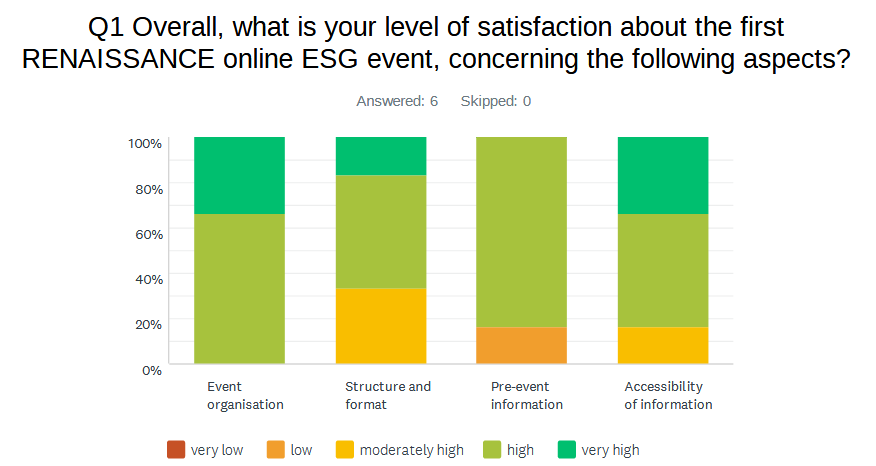
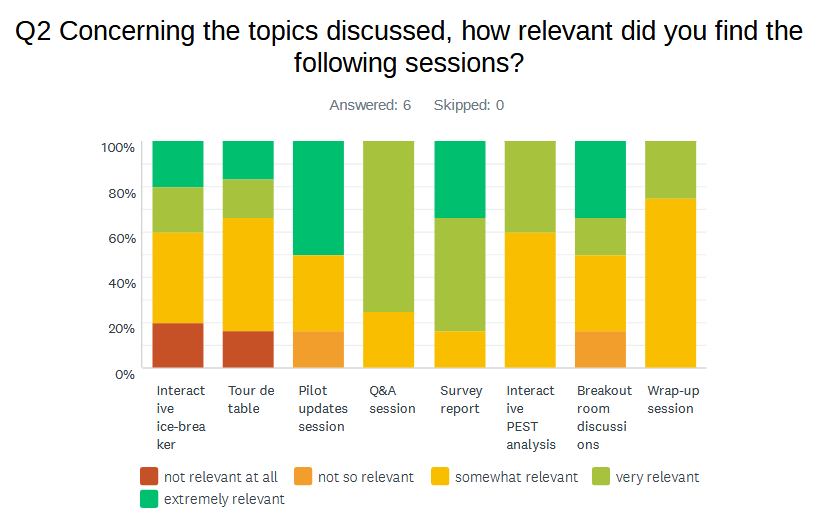

Most surprisingly the most interactive parts of the public meeting with External Stakeholders (ice-breakers, tour the table, breakout discussions) are ranked of lower importance despite more discussions and more interactivity are considered desirable. This induced us to consider, for future meetings, to propose a similar structure of online meetings but design more engaging interactions and lively discussions. In general the coordination and the dissemination team agreed on the positive impact of a more relaxed atmosphere and to keep slides to a minimum, in favour of a more human and open exchange with all the participants, whose opinion is always worthwhile considering.
